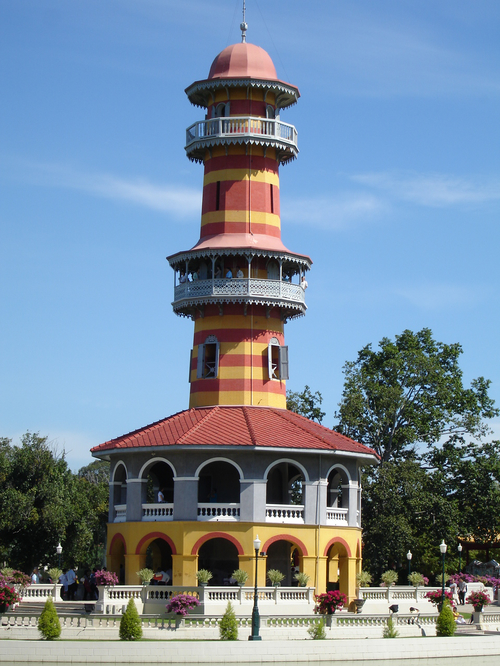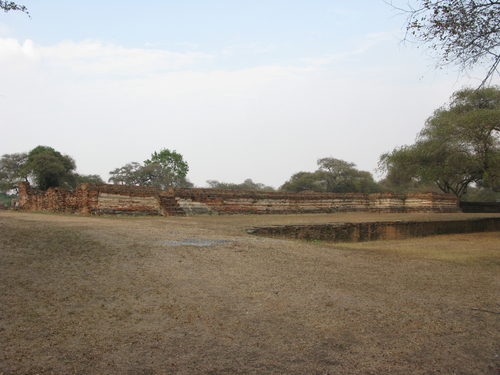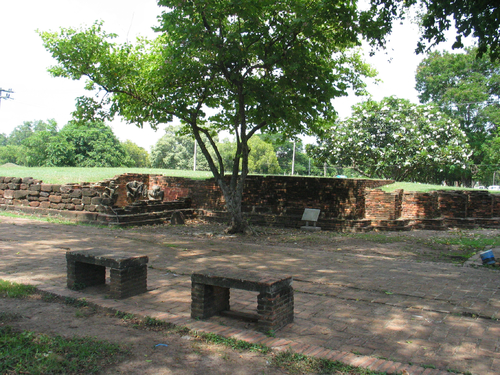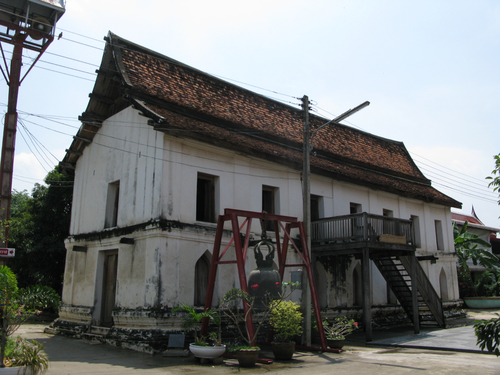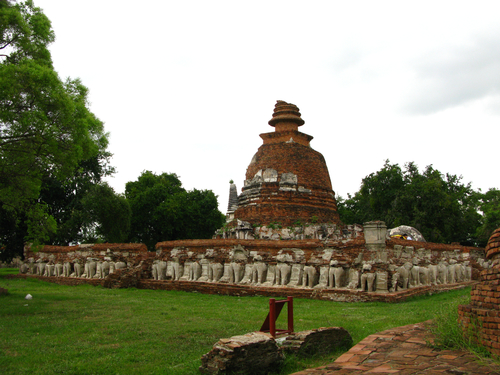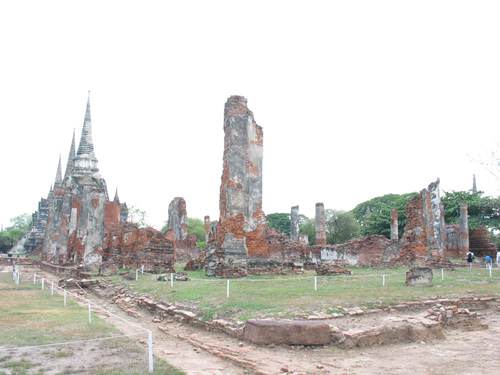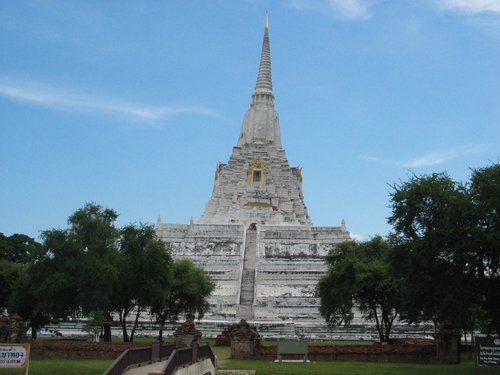Artwork Search
Arts in Southeast Asia Database
ArchitectureHo Vithuradasna
Ho Vithuradasna is a three-storey tower in dodecagonal plan. The first storey was made from brick and stucco with pillar supporting curved purlins. The upper storey have verandas decorated by carving wooden decorative like Gingerbread houses. The tower top is a dome with tiles. The tower is painted in red and yellow and has spiral staircase inside.
ArchitecturePhra Thinang Viharn Somdej
The ruins of Phra Thinang Viharn Somdej features only its brick platform. The building which formerly stood in the middle of the platform is oriented toward the east. Deep porticoes protrude from the eastern and western sides whereas at the north and the south were attached to a smaller portico.
ArchitecturePhra Thinang Chakkrawat Phaichayon
Only the base of the throne hall remains which was built with bricks and covered with plaster. It was also decorated with stucco garudas along the length.
ArchitectureTamnak Phra Phutthakosajarn
Tamnak Phra Phutthakosajarn is a two-storey building in a rectangular plan. It was built with brick and covered with plaster. The doorway is on the front wall of the ground floor whereas a row of pointed arch windows are on the side walls. The upper floor can be accessed by the staircase adjacent to side wall. Windows are on all sides of the building. The roof was built with timber and terracotta tiles.
ArchitectureThe Main Chedi of Wat Maheyong
The main chedi of Wat Maheyong is a round chedi standing on an ambulatory platform. It was built with brick, covered with plaster and posseses an exterior decoration with stucco reliefs.The ambulatory platform is a square base. There are niches along its walls which house life-sized figures of elephant's front-half. Four sets of staircase leading to the upper area of platform locate in the middle of each side. At the centre of the square ambulatory platform is round chedi. A row of Buddha niches forms the chedi's lower part. The upper parts were mostly rebuilt but the original triple ring moulding (malai thao) can still be seen. The middle part is a bell-shaped dome and a square pedestal. This part supports the uppermost part: a newly built spire replacing the original one which broke and fell down onto the platform.
ArchitectureViharn Phra Si Sanphet
Viharn Phra Si Sanphet was erected in front of the main chedis and oriented toward the east. The ruins of viharn stands on a rectangular plan. All of its superstructure had completely collapsed. However, some parts of the walls that still stand exhibit vertical narrow outlets in place of regular windows. The outer surface of the side walls were attached with columns supporting the roof. The pedestal of Phra Si Sanphet and other minor Buddha images was installed inside. The interior of the viharn also features rows of columns as a supporting element.
ArchitectureChedi Si Suriyothai
Chedi Si Suriyothai is an indented or recessed chedi. It was built with brick and covered with plaster. The chedi faces northward and stands on an indented (or recessed) ambulatory platform. The chedi's base is decorated with lines of sharp-edge moulding (lookkaew okkai) which supports the cella with can be accessed through the north staircase. There are porticoes projecting from the middle of all four sides of the cella. On these porticoes were topped with a miniature chedi. The next section is triple bases decorated with lines of sharp-edge moulding supporting the 12-angle indented (recessed) bell-shaped dome, a square pedestal, a shaft of the conical shape spire with a row of small columns, multi-tiered moulding cone-shaped spire and a top-most spire.
ArchitectureChedi Phukhao Thong
Chedi Phukhao Thong is a monumental architecture. It comprises a pyramidal ambulatory platform with a staircase projecting from the middle of all four sides and a 12-angle indented (recessed) body. The upper part of the chedi, which now tilted slightly, is composed of Buddha niches on four sides, triple rings moulding, anindented bell-shaped dome and a spire.
